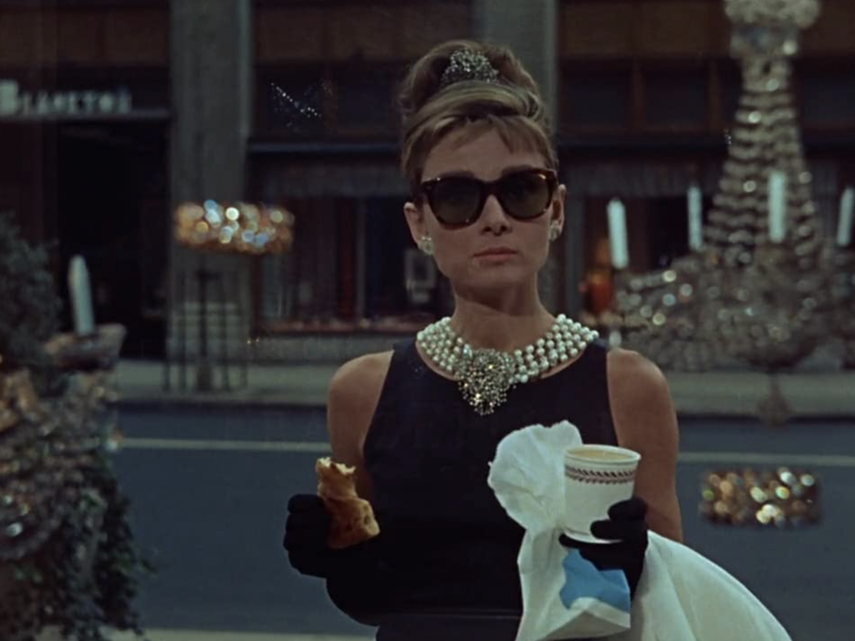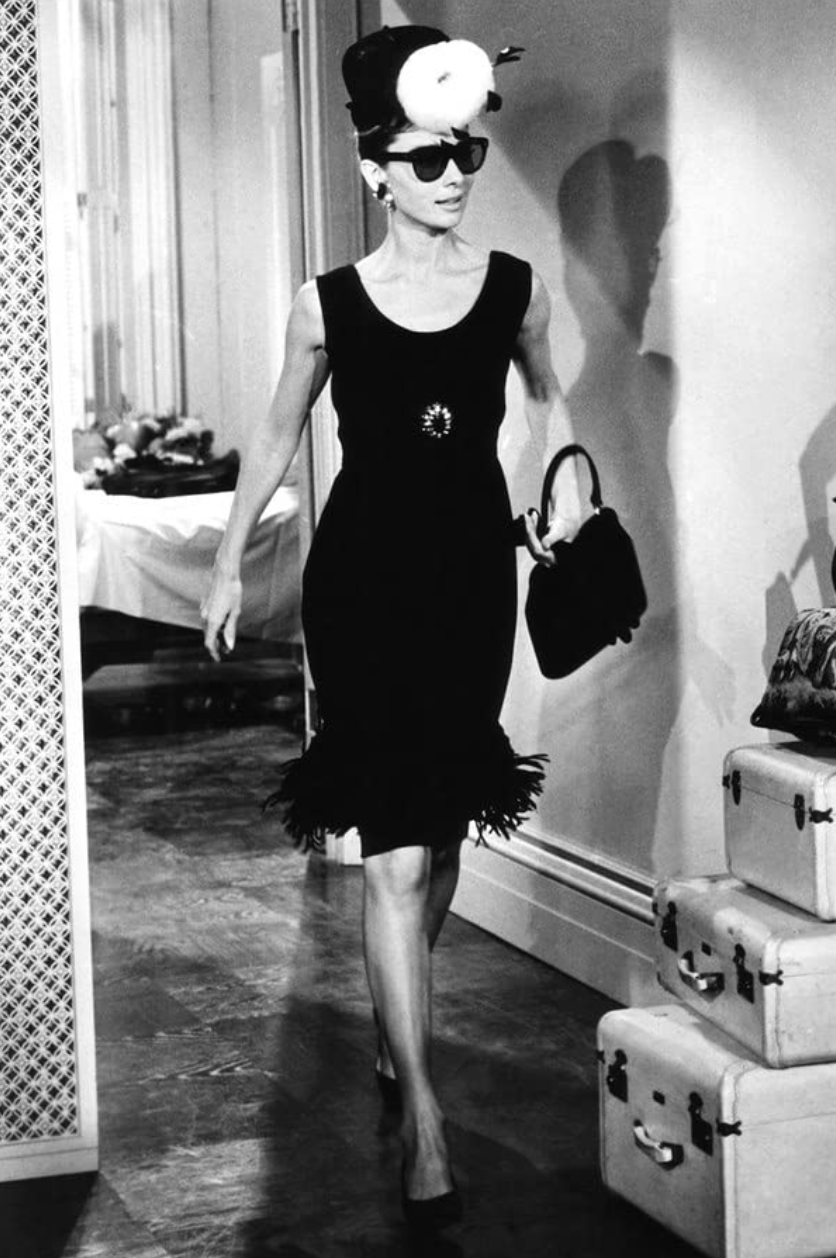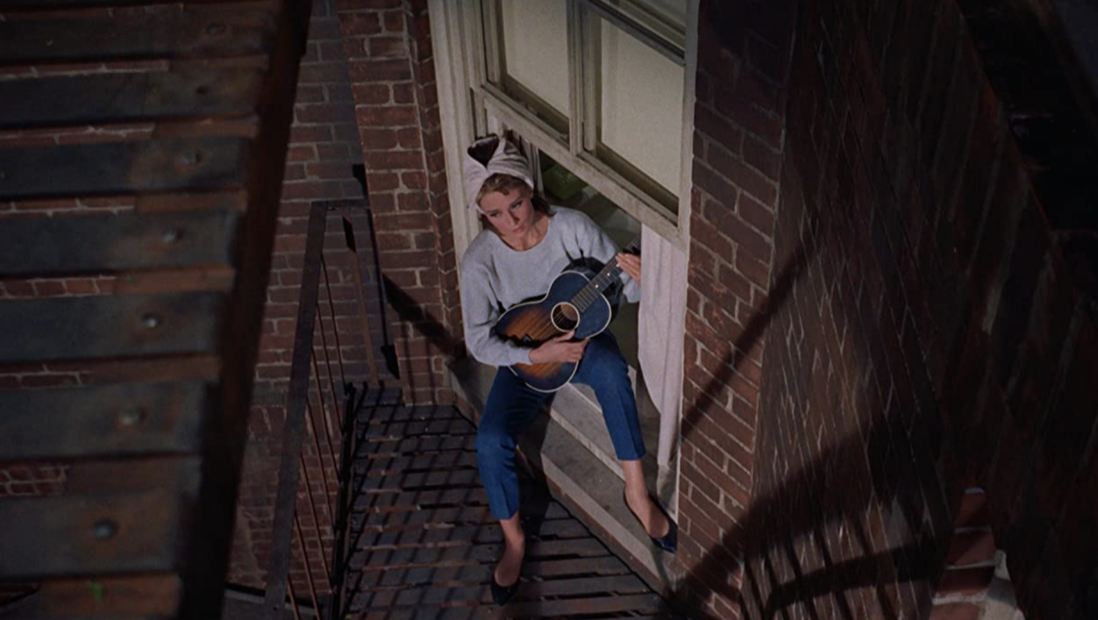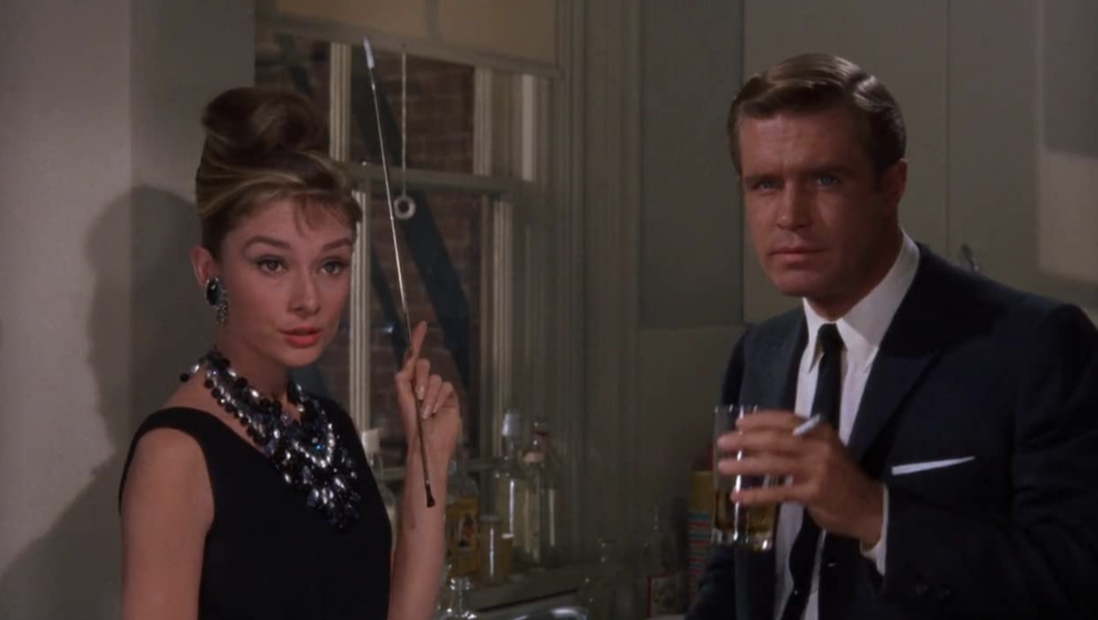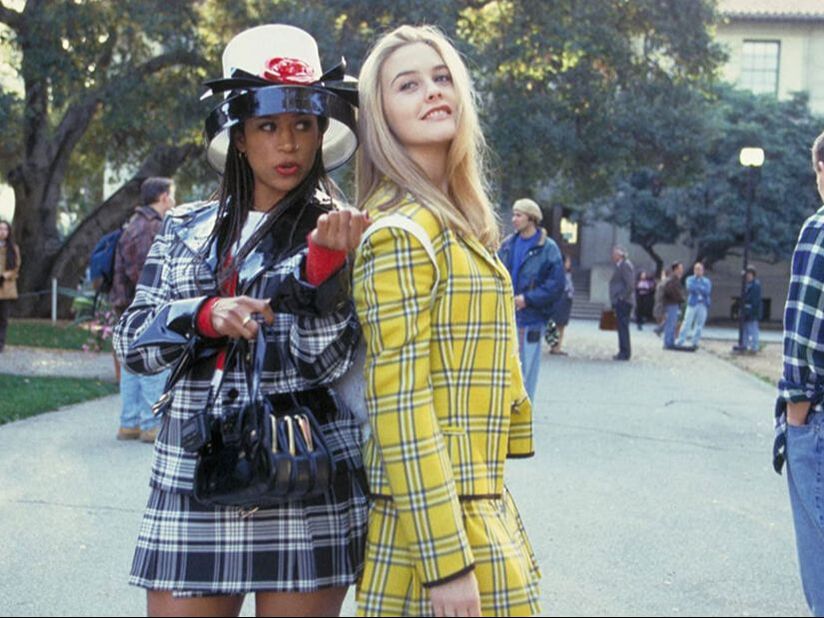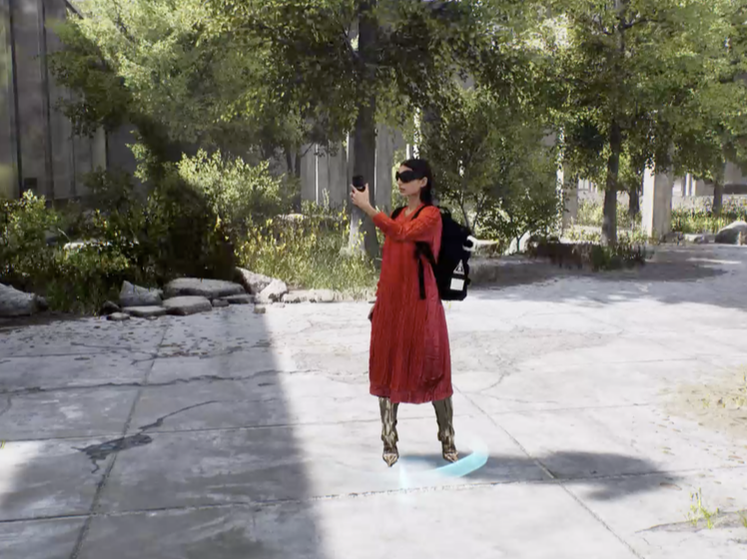|
16/12/2020 Fashion on film: Breakfast at Tiffany’sStep inside one of the 20th Century’s most iconic fashion films You know Breakfast at Tiffany’s. Or at least you think you do. How could you not? It is, after all, Breakfast at Tiffany’s. So go ahead and tell us the plot, we’ll wait… Struggling? We’re not surprised. While based on a novella by the great Truman Capote, the enduring memory of the cinematic version of Breakfast at Tiffany’s is not one of pacy story and Oscar-winning acting (although it did receive five nominations) but one of little black dresses, pearls and Audrey Hepburn’s intricately coiffed up-dos. For those who need a précis, Breakfast at Tiffany’s is about a naive cafe society girl named Holly Golightly (Hepburn) who falls in love with struggling writer Paul Varjak (George Peppard). But, as we’ve discussed, the plot is really beside the point - because Breakfast at Tiffany’s is the quintessential fashion film. Its influence on popular culture, the relationship between celebrities and designers and the starting point it has given countless of wardrobe departments since its 1961 release can’t be overstated. Here’s everything you need to know… The costume designWhile now it’s commonplace to see costumes pulled directly from high fashion runways on both big and small screens (just look at the proliferation of labels in sit-com Schitt’s Creek as a case in point), when costume designer Edith Head enlisted the talents of Hubert de Givenchy to help create Holly Golightly’s looks in Breakfast at Tiffany’s it was practically unheard of. In fact, if Christian Dior and Pierre Balmain hadn’t set a precedent with 1950’s Stage Fright and 1956’s And God Created Woman, chances are he may not have agreed at all. The work of a Parisian couturier, after all, could gain prestige on stage as part of a ballet or opera, but throwing his weight behind a Hollywood film about a frivolous party girl? Perhaps not so much. It helped, of course, that Givenchy knew a canny marketing opportunity when he saw one and had been building a fruitful relationship with Hepburn since she borrowed a number of dresses for her turn in Sabrina in 1954. Their friendship, cemented by their stellar collaboration in Breakfast at Tiffany’s, would go on to last decades and provide a framework for modern celebrity endorsement deals. Perhaps if Truman Capote had been allowed to cast his first choice actress, Marilyn Monroe, things would have turned out quite differently.
It could be argued, in fact, this it is these accessories that elevated the look from simple to iconic. As Pamela Keogh Clarke writes in her book Audrey Style, “The Hepburn Givenchy partnership reached the apogee of refined elegance as Holly Golightly’s hangover chic caused a run on triple strand faux pearl necklaces, sleeveless dresses and oversized dark sunglasses that continues to this day.” However, not only does the dress look great, it also plays an important role in establishing Holly Golightly’s character. It is first thing in morning. She is eating breakfast but clearly wearing a sophisticated evening gown while not looking at all dishevelled. Immediately it is clear that while, yes, Golightly is a lady of the night, she is also elegant, refined and completely in control of her situation. She is not your typical shady call girl but a woman the film urges you to admire and warm to. She is an underdog with the looks and poise of a movie star. The second black dressAlthough Givenchy’s shorter style had been ruled out for the opening scene, Hepburn does eventually slip into a briefer black dress later in the film. Featuring a similar sleeveless, scoop neck design to the first, this one ends slightly above the knee with a feathered hem and is made from silk (rather than the first’s satin). Worn with a huge lampshade hat, oversized sunglasses and long gloves, it is the picture of 1960s daytime elegance. Later, however, it is styled with both an exuberant white pom-pom fascinator and enormous earrings, followed by a huge tonal necklace and cigarette holder for an evening event. It is unusual to see one costume repeated in this way on film but again, this reveals something key about Golightly’s character. She understands the importance of clothing and appearance while not having the means to buy the wardrobe her life demands. She has learned to accessorise in a way that tricks her companions into believing her to be a woman of great style without inviting questions about wealth. The Moon River lookAnother look that serves to reveal key parts of Golightly’s personality, it is the scene in which she sings Moon River while wearing a simple pair of jeans and a sweatshirt that Hepburn believes tells you most about her character. “The real girl comes alive in the blue jeans. Every woman is an actress in a Paris gown,” the actress explained of the scene. Hair wrapped in a turban and wearing ballet flats rather than heels, this is one of the few times in which Golightly is seen without the presence of another character suggesting that, beneath the jewellery and finery, there is a simpler side to Golightly that she doesn’t allow the world to see. The legacyMuch of the fashion legacy of Breakfast at Tiffany’s centres around that opening black dress - with it frequently voted among the most iconic images of 20th Century cinema. While the actual dresses used in the movie were likely destroyed after filming, three copies were made: one for the Givenchy archive, one currently on display at the Museo del Traje in Madrid and one gifted to Audrey Hepburn. After her death in 1993, Hepburn's gown was donated to City of Joy Aid and, in 2006, appeared on the front cover of Harper’s Bazaar worn by Natalie Portman. It was auctioned at Christie’s the same year for £467,200 - far exceeding its reserve of £50,000. Of course, in its simplicity, it’s also a look that crops up time and time again in popular culture. Few and far between are the Halloween parties which do not feature at least on Holly Golightly while both Nicole Kidman and Shailene Woodley’s characters sported a version of this outfit at a Hepburn-themed party in 2017’s Big Little Lies. Anne Hathaway, too, referenced the shorter little black dress in Breakfast at Tiffany’s in perhaps a most unlikely role: as Catwoman in the Batman flick Dark Knight Rises. Perhaps the most important reference of all, however, came in 2017 when Tiffany’s opened a cafe in the newly refurbished home goods department of its Fifth Avenue flagship. Finally, after more than 50 years, you could actually have breakfast at Tiffany’s. |
Search by typing & pressing enter

